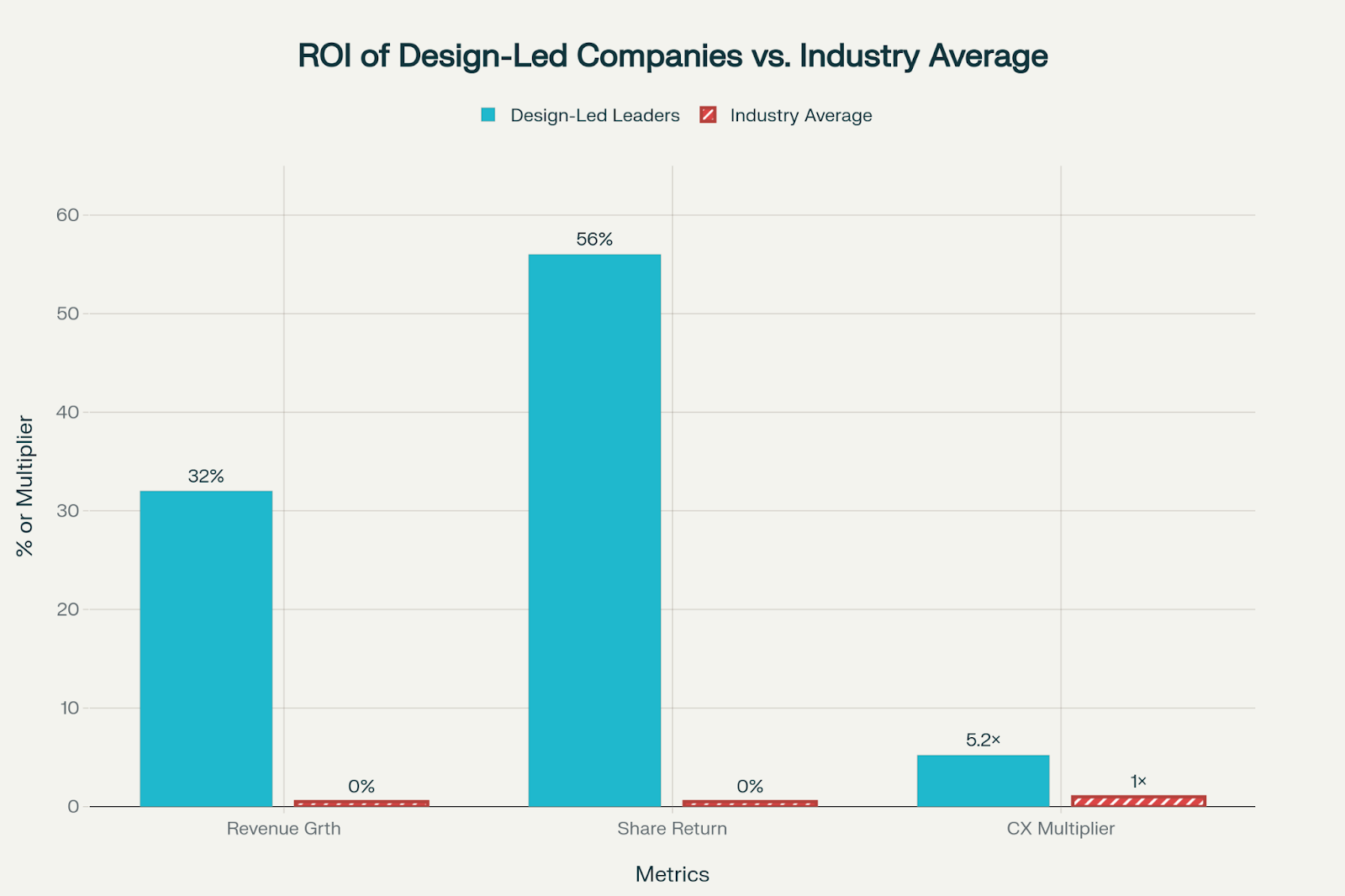Design Isn’t Subjective. It’s a Financial Strategy.
An exploration of how good design boosts ROI, lowers CAC, increases LTV, and strengthens trust, while bad design quietly drains your P&L. A must-read for tech founders and investors.
.jpg)
There’s a little myth floating around tech like a stubborn ghost: design is what makes something "look pretty." A pleasing shade of blue. A charming button radius. A homepage that whispers ✨I was made in Figma.✨
That’s decoration. Lovely, yes, sure... but not the point.
Design is how your product makes money.
Bad design doesn’t just offend the eye. It quietly drains your P&L like a leaky pipe behind the wall. Good design doesn’t just look nice. It pulls its weight. It compounds. It behaves like a well-trained revenue engine hiding in plain sight.
Pretty is subjective. Friction is not.
If you're an investor trying to diagnose why one portfolio company hums while another sputters, or a founder wondering why growth feels like pushing a boulder uphill, design might be the hidden variable messing with your math.
Design isn’t about visuals — it’s about behavior
When we talk about design, we’re talking about how effectively your product moves people through the actions that matter:
- Can they complete the task they came for without needing a map?
- Is the next step painfully obvious?
- Do they trust you enough to convert?
- Do they return without filing a support ticket, or do they vanish forever?
You might have noticed that these aren't aesthetic questions: They’re performance questions, and they're very measurable. They shape everything from activation to churn to your cost to serve.
Design doesn't live in your color palette. It lives deep inside your P&L.
And the data doesn’t care about your opinions. If design were purely "vibes," the numbers wouldn’t be so lopsided.
Let’s take a look:
The data says: design-led companies outperform
Decades of research point in the same direction: treating design as a capability creates outsized returns.
- McKinsey found that top-quartile design performers achieved ~32% higher revenue growth and ~56% higher total shareholder return over five years.
- Watermark Consulting’s 2024 CX ROI study shows “customer experience leaders” outperform laggards by 5.2× in cumulative shareholder return
- Forbes reports that 84% of companies improving customer experience see revenue increases — a reminder that customer experience is a business lever, not a creative one

If design were purely aesthetic, these numbers wouldn’t exist.
Why design compounds ROI
Design improves everything that touches a customer. And anything that improves the customer improves the business.

1. Lower CAC
Clearer messaging and better onboarding increase conversion without increasing spend.
Same dollars → more activated users → lower CAC.
2. Higher LTV
Guided onboarding, intuitive workflows, and clearer navigation reduce early churn and increase long-term retention. LTV climbs — sometimes dramatically.
3. Lower cost to serve
Confusing flows = support tickets. Better design = fewer tickets, faster resolution, better margins.
4. Faster shipping and less rework
A real design system frees engineers from reinventing common patterns. They build faster, break less, and spend their hours creating value instead of patching UX potholes.
5. Stronger brand and trust
In B2B and health tech especially, the product’s feel communicates stability. A coherent, confident design experience signals “You can trust us.” That affects win rates, pricing power, and renewals.
How investors should evaluate design in diligence
Founders often say, ‘We’ll fix the design later.’ But ‘later’ typically means pushing off the work that actually improves conversion and retention.
Investors can spot this early with a few questions:
- What’s your activation rate, and where do users get stuck?
- How quickly do new users reach time-to-value?
- How many support tickets are rooted in confusion?
- Do you have a design system engineers follow?
- When was the last usability test, and what changed because of it?

You don’t need to be a designer. You just need to see whether design is treated as an input to growth, not an afterthought.
For founders: design is not something to “get to later”
Ignoring design isn’t neutral, it’s costly. Weak design forces every party of the business to overcompensate:
- More marketing to replace churned users
- More support to handle confusion
- More engineering cycles fixing UX issues
- More sales effort compensating for mistrust or unclear value
A strong design foundation flips that dynamic. Suddenly the entire system runs smoother. Everyone moves faster. Growth feels earned rather than forced.
The takeaway
Design is not subjective. And it’s definitely not decoration.
Design is one of the most measurable, financially meaningful levers in a company.
If you’re a VC, analyze it.
If you’re a founder, operationalize it.
Because when design is done well, it doesn’t just make your product look better. It makes your entire business work better with less effort and better returns.





